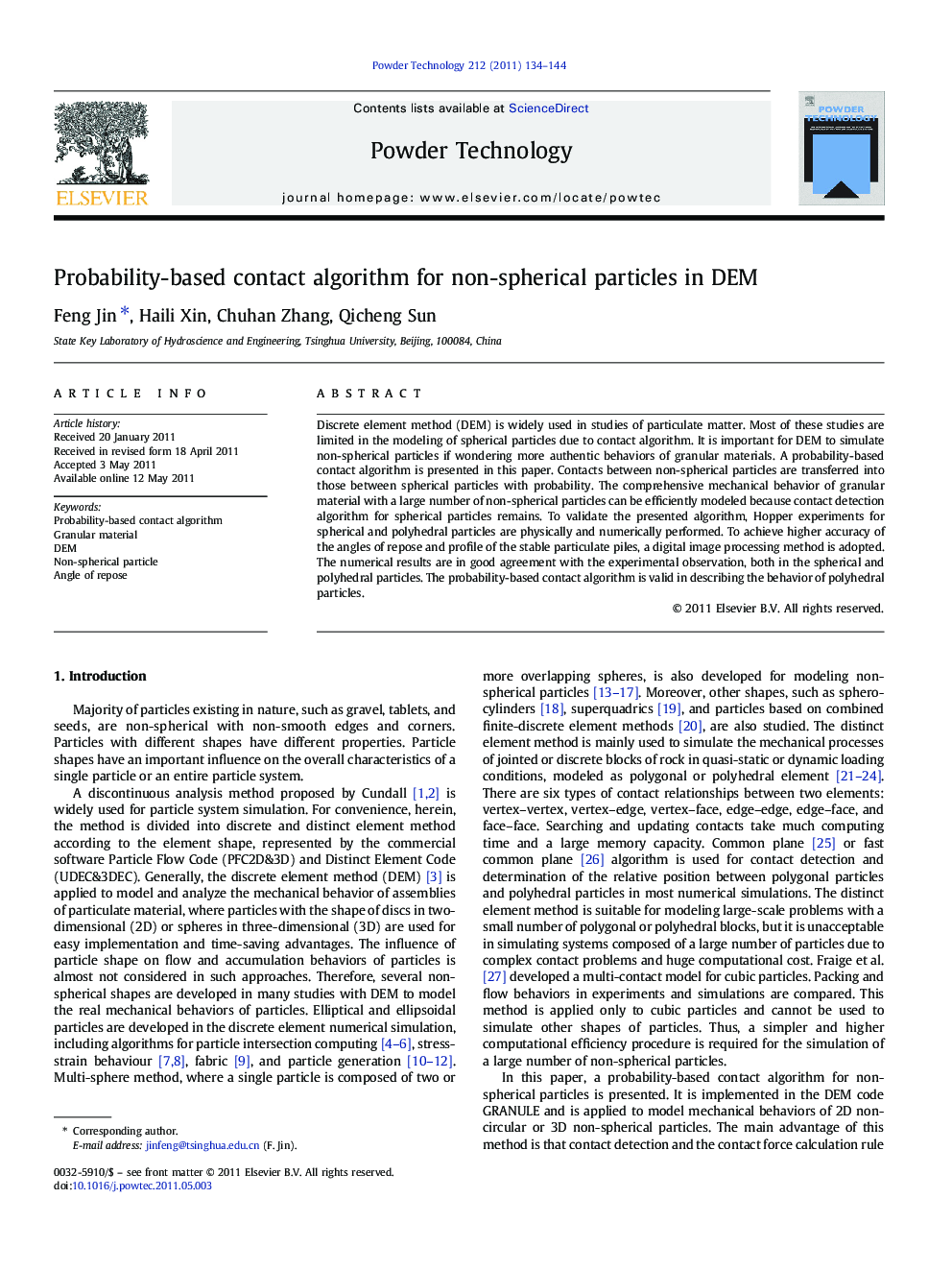| کد مقاله | کد نشریه | سال انتشار | مقاله انگلیسی | نسخه تمام متن |
|---|---|---|---|---|
| 237428 | 465707 | 2011 | 11 صفحه PDF | دانلود رایگان |

Discrete element method (DEM) is widely used in studies of particulate matter. Most of these studies are limited in the modeling of spherical particles due to contact algorithm. It is important for DEM to simulate non-spherical particles if wondering more authentic behaviors of granular materials. A probability-based contact algorithm is presented in this paper. Contacts between non-spherical particles are transferred into those between spherical particles with probability. The comprehensive mechanical behavior of granular material with a large number of non-spherical particles can be efficiently modeled because contact detection algorithm for spherical particles remains. To validate the presented algorithm, Hopper experiments for spherical and polyhedral particles are physically and numerically performed. To achieve higher accuracy of the angles of repose and profile of the stable particulate piles, a digital image processing method is adopted. The numerical results are in good agreement with the experimental observation, both in the spherical and polyhedral particles. The probability-based contact algorithm is valid in describing the behavior of polyhedral particles.
A probability-based contact algorithm is presented and implemented in the DEM code for simulating non-spherical particles with high computational efficiency, because contact detection and the contact force calculation rule remain similar to the spherical particle code. Hopper experiments for spherical and polyhedral particles are physically and numerically performed and the results are in good agreement.Figure optionsDownload as PowerPoint slideResearch highlights
► A probability-based contact algorithm is presented for non-spherical particles.
► The advantage of the algorithm is that it has high computational efficiency.
► Results of hopper experiments and corresponding numerical simulation are compared.
► Tetrahedral particles form a higher, narrower pile compared with spherical particles.
Journal: Powder Technology - Volume 212, Issue 1, 15 September 2011, Pages 134–144